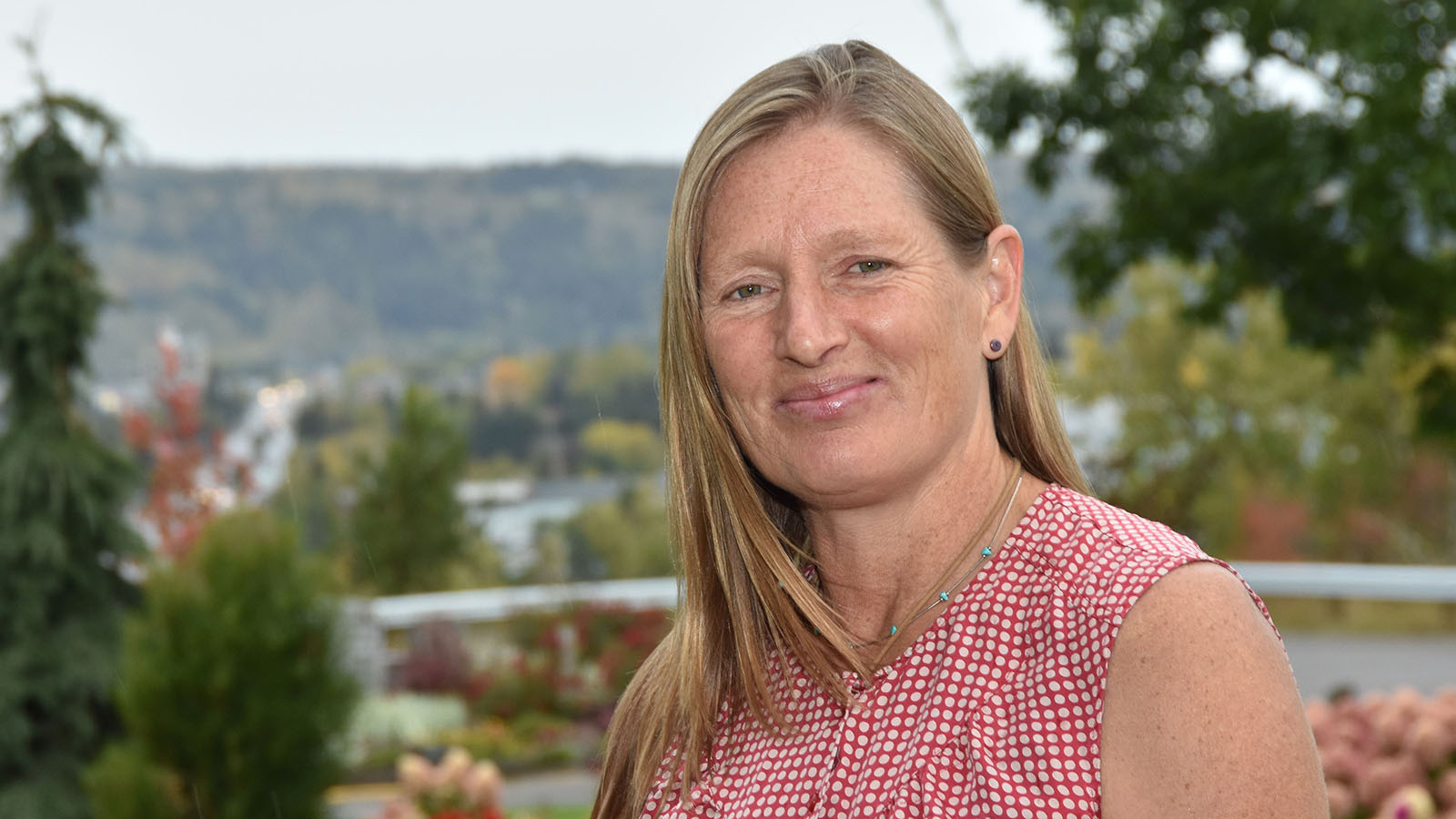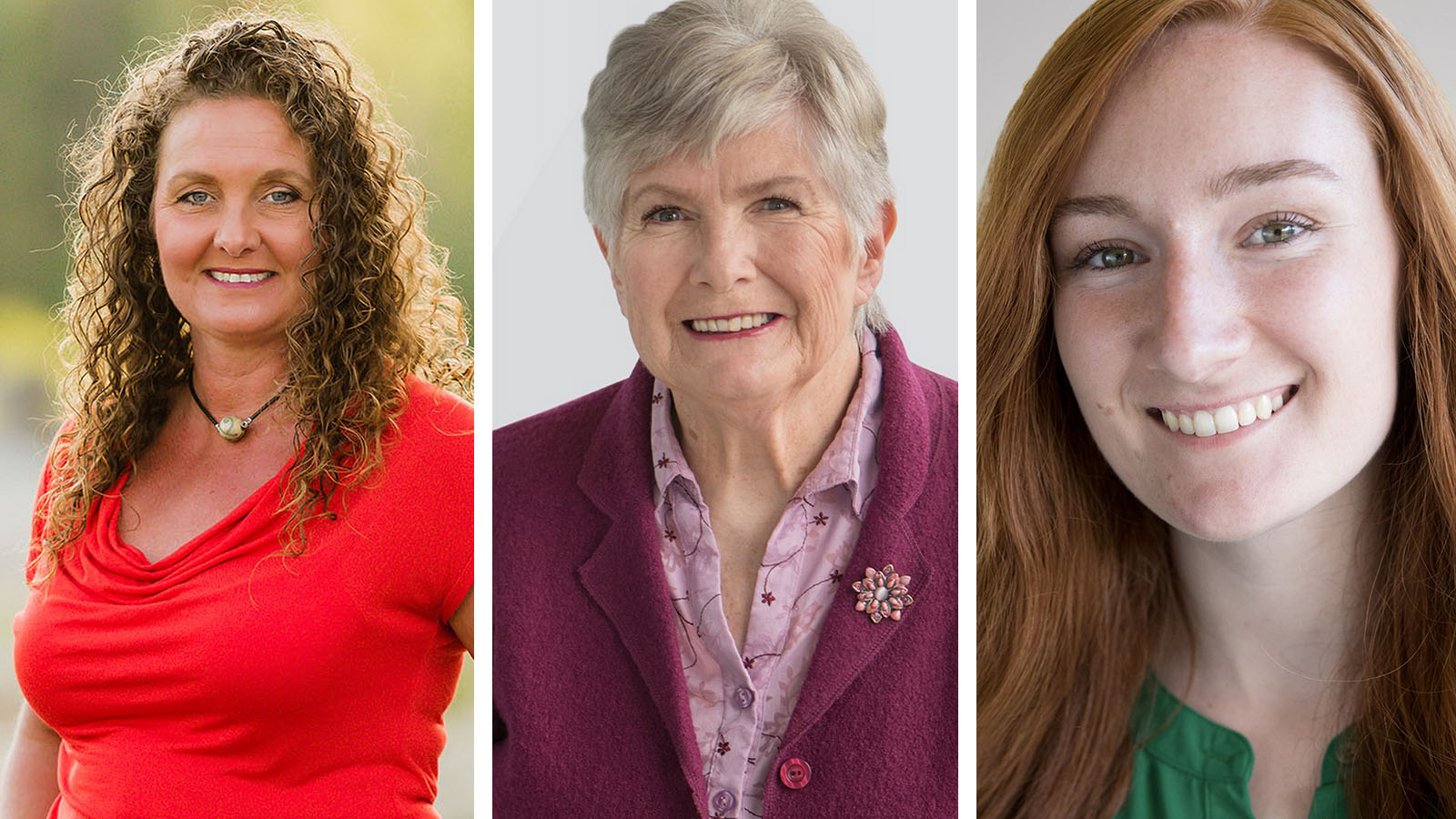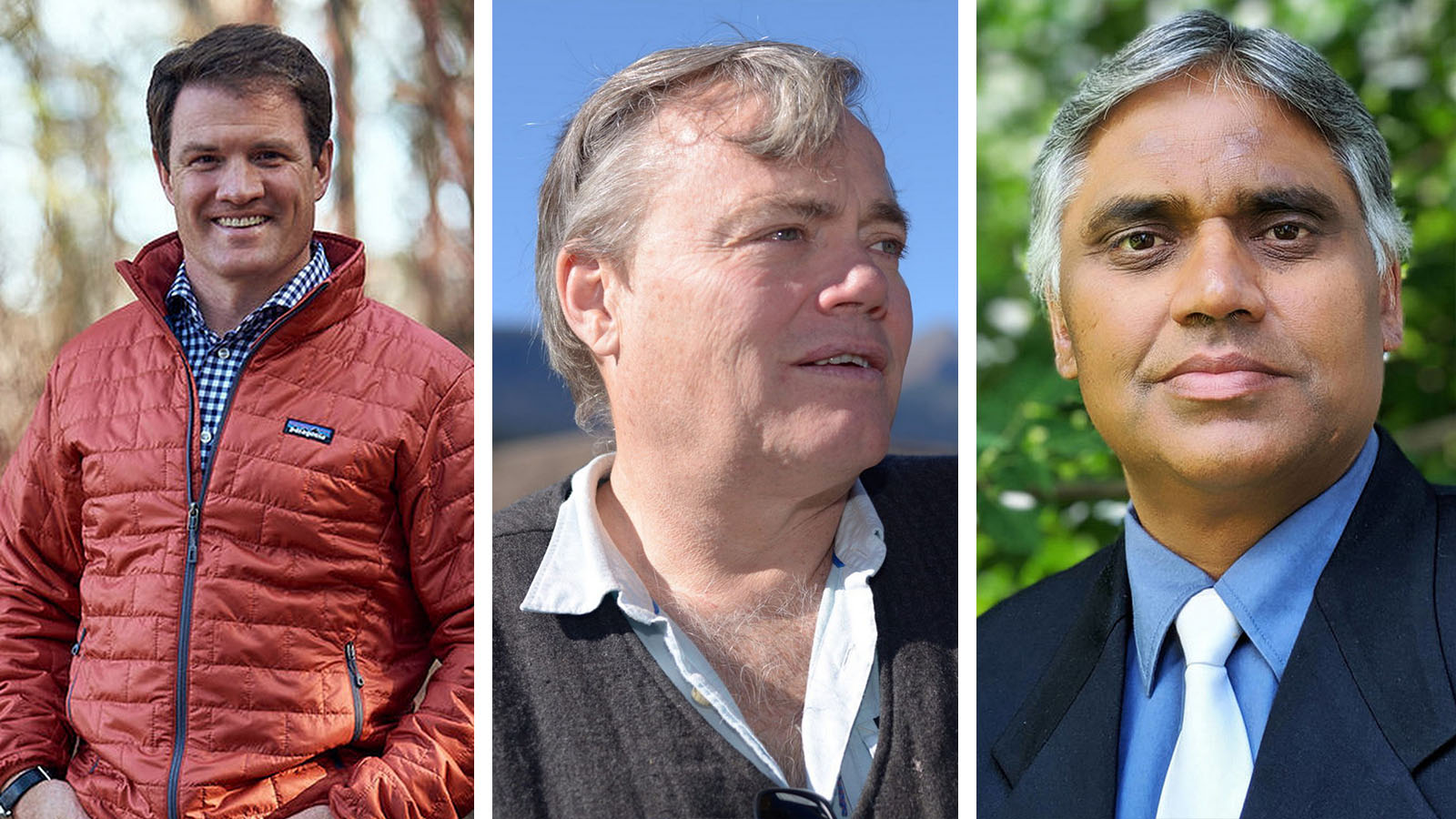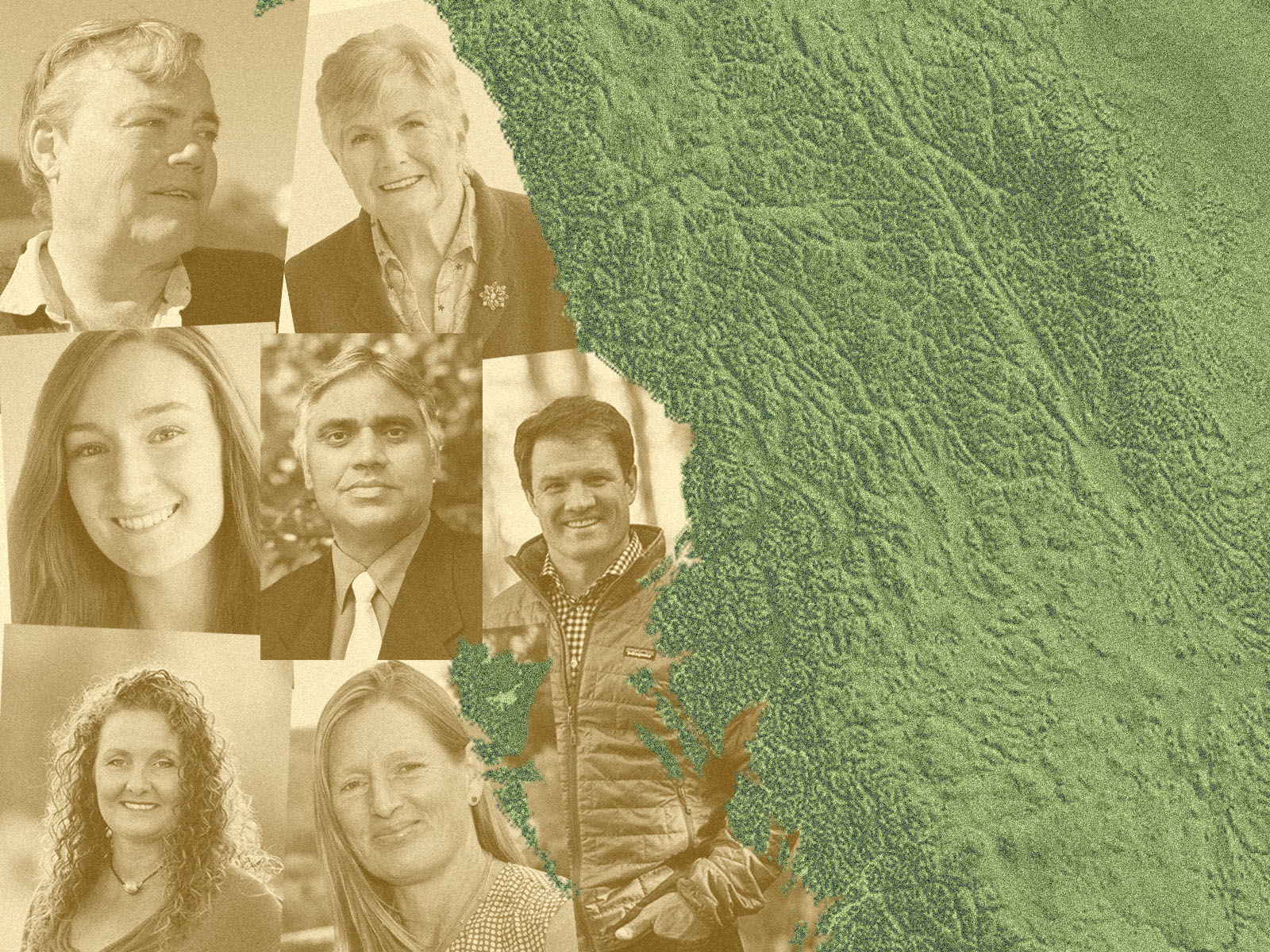Northern British Columbia, with its oil and gas jobs, will be on the frontlines in the transition to a green economy.
That’s why we dug into the challenges and possibilities in a report Thursday as part of our reader-directed election coverage.
We explored the question readers posed — How do we transition to a green economy without causing mass unemployment and upheaval? — and found projects and possibilities that could ease the region into a post-carbon world.
But we also found general agreement that governments need to lead the transition to a green economy.
We reached out to election candidates in the three northern ridings to see how — or if — they see the region transitioning away from jobs that depend on fossil fuels, where they stand on liquefied natural gas (LNG) production and how they see government’s role.
LNG is a hot button issue in the region. Supporters are keen on the jobs and argue LNG exports will reduce the use of more polluting fuels. Critics reject that claim and say the projects will drive up emissions and increase fracking, which uses and pollutes huge amounts of water, in the province’s northeast gas fields. Many residents — particularly some First Nations — have been outspoken in their opposition to the industry and the required pipelines.
So where do the candidates stand?
The three Conservative candidates wouldn’t say. Two of the three didn’t respond to repeated requests for information on their positions; the third said no to an interview. NDP and Liberal candidates in the Prince George-Peace River-Northern Rockies riding also couldn’t be reached for comment.
But here’s what the candidates we heard from had to say.
Prince George-Peace River-Northern Rockies

This huge riding — about eight times the size of Vancouver Island — includes the northeast, where 4,000 people work directly in the oil and gas industry and some 40,000 depend indirectly on the sector.
Conservative Bob Zimmer is expected to hold his seat; he took 53 per cent of the vote in 2015.
Green candidate Catharine Kendall, the only candidate to respond to The Tyee, is in her first political race.
“I’m as green as it gets,” said Kendall, who runs a youth centre in Prince George and lives 50 kilometres east of the city.
“I’m coming from a grassroots, community development perspective,” she says about economic change. “We need to go into those communities across this region and find out what it is that people want and where the strengths lie.”
Kendall says she supports Green leader Elizabeth May’s Oct. 1 announcement promising free postsecondary education.
“There are lots of transferrable skills if we were to go from oil and gas to bio-energy or those kinds of things, but there are still going to be new skills that are going to be needed. Offering that free education component would be huge,” she says.
Kendall didn’t express a strong stance on LNG and said a green transition could be achieved without abrupt actions that hurt local economies.
“If we’re looking at 20 years, really recognizing that we need to reduce greenhouse gases, then we need to do phasing in and phasing out of certain aspects of what we’re doing with our industries,” she said. It’s important to understand “what’s working and what’s not for air and water and our communities,” she said.
Cariboo-Prince George

Cariboo-Prince George sits south of the other two ridings, with Vanderhoof as its northern boundary. The natural gas industry is important to the region.
Conservatives have held the riding since it was created in 2004, though in 2015 Conservative Todd Doherty — running again this time — only took 37 per cent of the vote, with the Liberals at 32 per cent and the NDP at 26 per cent.
Liberal candidate Tracy Calogheros, who also ran in the previous election, said the fossil fuel industry is important to the riding.
She says that LNG development to the northeast would have a direct impact on Prince George’s economy.
The Coastal GasLink LNG pipeline, currently being built, doesn’t run through the riding, and Calogheros says there hasn’t been a lot of discussion about it. Last year, the federal Liberals announced $275 million in infrastructure funding for the project.
Calogheros doesn’t oppose LNG development.
“I think that natural gas is what we use to heat our homes, and in the climate that we live in we need gas,” she says. “There’s no way everyone wants to be cutting firewood or going back to oil furnaces. I think it’s the better option.”
The LNG plant currently under construction in Kitimat would actually produce for export to Asian markets.
Calogheros points to Quesnel, south of Prince George, as a model for transitioning to a greener economy. She says the city has been working to bolster its forest industry with value-added wood products, manufactured locally, that could help the transition to zero-emission homes.
“I think there’s opportunities in rural B.C. to duplicate a lot of what [Quesnel] is doing. Their approach is really about staying within the forest industry and diversifying within it so they continue to have a vibrant forest economy going forward,” she says.
Both Calogheros and Heather Sapergia, the NDP candidate for the riding, point to Prince George’s Wood Innovation and Design Centre as an example of an initiative that’s creating jobs and economic activity by moving toward a more efficient building industry while adding value to local wood products.
Sapergia also points to Prince George’s energy heating system, which uses waste wood from a local mill to heat several municipal buildings, as an example of an opportunity to reduce fossil fuel use.
She supports government incentives and regulations to encourage building retrofits and the move to renewable energy sources.
“We need to do these things now. We don’t need to talk about them; we need to do them now. We need to end oil and gas subsidies, and we need to invest in renewable energy,” she says.
Sapergia also says tourism, in particular mountain biking, could provide economic opportunities as part of a green transition.
“It has just exploded between Valmont, Williams Lake, Burns Lake and now Prince George. That sounds like a small thing, but it engages a lot of local businesses, hotels, restaurants and bike-repair shops,” she says.
While she expressed “mixed feelings” about LNG, Sapergia says she is “dead set against fracking.”
“If the NDP is to get into government, I believe that what should happen is that fracking needs to stop immediately,” she says.
Mackenzie Kerr, Green Party candidate for the riding, is unequivocal.
“Yes, the north can transition to a fossil-fuel-free economy,” she says, quickly pulling stats from the party’s platform.
In 2017, she says, 268,000 people were employed nationally in the clean energy sector, in addition to 436,000 jobs in the energy efficiency sector. That’s compared with 62,000 direct jobs last year in oil and gas, she says.
Kerr adds that projections show there could be four million future jobs in energy-efficiency retrofits.
“This is absolutely the biggest economic opportunity facing our world right now. We really need to be looking at the future of renewable energy and a green economy and transitioning as fast as possible,” she says.
“We don’t want to leave anyone behind. We think that trades people have absolutely incredible skills that we are going to need in our future green economy. We really want a just transition.”
She says the party wants to work with oil, gas and coal workers to create a transition plan and funding opportunities that are unique to each region. All levels of government will need to be involved, she says.
“This is going to be an all-hands-on-deck transition, so we need everyone on board and everyone at the table. We need to make sure that we’re giving local supports and the funding that is needed to help people transition in the communities that need these services.”
The Green party’s promise of free education, funded by taxing large multi-national corporations and pulling oil and gas subsidies, would be key to transitioning workers, she says. Supports could also help some oil and gas workers retire sooner than planned, she adds.
When it comes to LNG, she doesn’t mince words.
“The Green Party is not in support of LNG,” she says. “We want to ban fracking. We’ve seen the impacts and the science is clear, so we need to take action on that.”
Skeena-Bulkley Valley

Unlike its neighbours to the south and east, the giant northwest Skeena-Bulkley Valley riding — it’s more than one-third of the province — has consistently been NDP, represented by Nathan Cullen since its creation in 2004.
Cullen is retiring. And with LNG supporters in Kitimat and Prince Rupert and opponents in the riding’s interior, the issue threatens to split the progressive vote between the NDP and Greens.
NDP candidate Taylor Bachrach, on leave from his position as Smithers’ mayor, maintains that the LNG Canada plant is a done deal.*
“The reality is that LNG Canada is a fully permitted project that is currently being built,” he told The Tyee. “I believe our responsibility as community leaders is to make it the best project possible to minimize the risks and maximize the local benefits.”
Any future LNG developments will have to be held to a three-part test, he says.
“It has to fit within our climate plans, it has to receive Indigenous consent, and it has to deliver local jobs and benefits for communities. That’s critically important. I believe that those criteria reflect the desires of our region and our province.”
Bachrach touts the Green New Deal as a means to tackle the climate crisis and economic inequity. He points to home retrofits and wildfire prevention and preparedness as economic opportunities, in addition to retooling traditional industries like forestry, fishing and tourism for a green economy.
“The thing that excites me about the NDP’s platform is tackling economic inequality as part of the climate transition,” he says. “While we have an economy that delivers high-wage jobs for some people in our communities, those benefits are not equitably accessed by everyone. We need a concerted effort around retraining, around removing the barriers to employment and around delivering good jobs for the people who need them most in our communities.”
Green opponent Mike Sawyer has accused Bachrach of not taking a clear stance on the LNG issue.
Sawyer has certainly been clear. When he announced his candidacy, Sawyer referred to himself as “the most hated man in northern British Columbia” for his multiple legal challenges against LNG projects proposed for the region.
He expressed less certainty about what might lie beyond a carbon-based economy.
“We have a really big challenge in front of us, and we have to re-think and re-model what our whole economy needs,” he says. “If anyone right now tells you they know what the solution is, while I’m open to listening, my gut reaction is they’re just bullshitting us.”
Sawyer points out that the need to transition comes at a time when the region’s mainstay industries, such as forestry and fishing, are in decline, and adds that artificial intelligence could replace trucking jobs.
He suggests publicly funded transportation is needed in the region and says reversing a trend of declining agriculture could address food security and create jobs while lowering carbon emissions.
“We have to be thinking, what are our agricultural policies and how do they contribute to getting off carbon? A head of local lettuce, the carbon footprint of that is much, much lower than the carbon footprint of a head of lettuce brought from Central America,” he says.
Sawyer previously worked as a builder using structural insulated panels, a pre-fabricated product that offers higher efficiency than traditional construction. While he says the panels aren’t popular with contractors because they require less labour to install, he sees an opportunity in home retrofits.
“Virtually 100 per cent of our housing stock is below building code, and the current building code is not adequate for the problem of getting to some level of net zero in built houses,” he says. “There’s a massive job to be had in upgrading the existing housing stock or replacing the existing housing stock so we can get to that level.”
He says governments should offer incentives to make that happen.
Dave Birdi, Liberal candidate for Skeena-Bulkley Valley, has worked in both the financial and forest sectors. He supports infrastructure development that would enable consumers to make greener choices.
“We need to get the infrastructure in place. For example, in order to get into electric vehicles, we need to get charging stations along Highway 16,” says Birdi. “Once we get the infrastructure in place, then it opens up additional opportunities, for example, for young people and for the trades.”
Birdi also says there’s a need to train the younger generation in green energy and technology jobs.
“One of the challenges from the industry I also see is there’s a shortage of qualified people in the field,” he says, adding that green energy is “slowly starting to take off” in the northern part of the province.
He suggests that barging LNG from Kitimat to small coastal communities that rely on diesel generators for electricity could reduce carbon emissions while making use of local resources.
“We need to get our natural resources to the market. The first priority is it has to be done environmentally safely and Canada is full of resources, oil and gas, forestry, minerals,” he says.
“We need to encourage manufacturing, processing facilities in Canada over the long period.”
*Story clarified Oct. 11 at 12:30 p.m. ![]()
Read more: Election 2019, Energy, Labour + Industry, Environment

















Tyee Commenting Guidelines
Comments that violate guidelines risk being deleted, and violations may result in a temporary or permanent user ban. Maintain the spirit of good conversation to stay in the discussion.
*Please note The Tyee is not a forum for spreading misinformation about COVID-19, denying its existence or minimizing its risk to public health.
Do:
Do not: